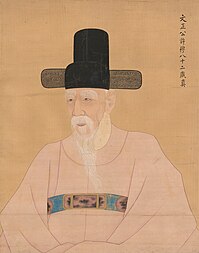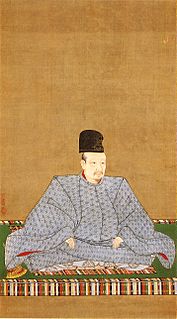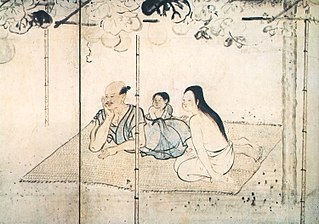 W
WWenceslas Cobergher, sometimes called Wenzel Coebergher, was a Flemish Renaissance architect, engineer, painter, antiquarian, numismatist and economist. Faded somewhat into the background as a painter, he is chiefly remembered today as the man responsible for the draining of the Moëres on the Franco-Belgian border. He is also one of the fathers of the Flemish Baroque style of architecture in the Southern Netherlands.
 W
WHeo Mok was a Korean politician, scholar, and calligrapher during the Joseon Dynasty. Heo was most commonly known by the pen name Misu.
 W
WKanō Einō was a Japanese painter of the Kyō-ganō sub-school of the Kanō school of painting. He became head of the Kyō-ganō upon the death of his father Kanō Sansetsu, and his grandfather was the Kyō-ganō's founder Kanō Sanraku. Einō compiled the Honchō Gashi, the earliest serious art-historical work in Japan.
 W
WKanō Naganobu was a Japanese painter of the Kanō school.
 W
WKanō Naonobu was a Japanese painter of the Kanō school of painting during the early Edo period. He was the younger brother of Kanō Tan'yū, with whom he completed a number of prominent commissions for the Tokugawa shogunate. His style differed somewhat from Tan'yū's in his bold use of negative space and his mastery of ink wash painting. Naonobu also used the art name Jitekisai (自適斎).
 W
WKanō Takanobu was a Japanese painter of the Kanō school of painting during the Azuchi–Momoyama period (1573–1615). He was the father of Kanō Tan'yū, one of the most prominent painters of the school.
 W
WKanō Yasunobu was a Japanese painter of the Kanō school of painting during the Edo period. He was the third son of Kanō Takanobu, who had been head of the school, and succeeded Kanō Sadanobu as head of the Kyoto branch in 1623 until he joined his brothers in. Yasunobu was the youngest brother of Kanō Tan'yū, one of the most prominent painters of the Kanō school. His best remembered work is the Gadō Yōketsu, a Kanō school history and training manual. He also worked under the art names Eishin (永真) and Bokushinsai (牧心斎).
 W
WKanō Naizen was a part of the Japanese family of painters, the Kanō school. He was the middle son of school's head Kanō Eitoku, younger brother to the Kano school heir Kanō Mitsunobu, older brother to Kanō Takanobu, and adopted brother to the famed Kanō school painter Kanō Sanraku. Naizen primarily worked with his fathers and brothers in the head Kanō workshop in Kyoto to restore many imperial buildings, Buddhist temples, and Shinto shrines that were destroyed during the Kamakura period and the Genpei Wars. In 1610–15 Naizen moved to Edo, the new administration capital, at the behest of the recently ascendent Tokugawa shogunate, Tokugawa Ieyasu.
 W
WKanō Sansetsu was a Japanese painter also known as Kanō Heishiro. He was born in Hizen Province, Kyūshū, and died in Kyoto.
 W
WKanō Tan'yū was one of the foremost Japanese painters of the Kanō school. His original given name was Morinobu; he was the eldest son of Kanō Takanobu and grandson of Kanō Eitoku. Many of the most famous and widely known Kanō works today are by Tan'yū.
 W
WKusumi Morikage was a Japanese painter of the Edo period. He came from Kaga Province, the centre of the lands of the Maeda clan. He fell afoul of his teacher, Kanō Tan'yū, and became the Maeda clan's official painter. His sympathy for farmers and the poor people of the Edo period is reflected in his works.
 W
WPaul Liégeois (fl.1650-1670) was a French still-life painter, active in Paris. He was probably of Flemish origin, as suggested by his name.
 W
WMatthias Rauchmiller was a painter, sculptor and ivory carver active and influential in Vienna after 1675. Born on January 11, 1645, in Radolfzell, he died in Vienna on February 5, 1686.
 W
WKarel Škréta Šotnovský ze Závořic (1610-1674) was a Czech portrait painter who worked in the Baroque style.
 W
WAnton Stevens was a Bohemian painter active in the second third of the 17th century. Besides Karel Škréta he was another important promoter of early Baroque painting in the country.
 W
WGertruida van Veen was a painter from the Southern Netherlands.
 W
WJohann Rudolf Werdmüller was a Swiss Baroque painter and medallist.